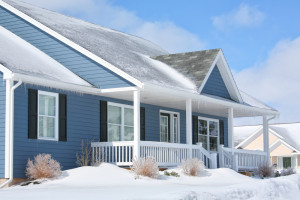Weather Crisis: Changing The Real Estate Landscape
Extreme weather cycles aren’t just frustrating homeowners and real estate professionals, they are literally changing the landscape and property trends. The U.S. seems to be increasingly buffeted by extreme weather from coast to coast. While we have seen the physical landscape and some fortunes affected already, we really haven’t even begun to see the tip of the iceberg in terms of the changes that are in the works. In addition to major hurricanes that have re-shaped the south and northeast, the recent polar vortex proved just how cold it can get and how poorly many cities and homes are equipped to do deal with it. However, just as significant is the new California water crisis. So what does this all mean for real estate investors? Building Trends & The Weather Some of the biggest and most drastic changes we will see for the industry are going to be how the government implements new rules, zoning and restrictions. We’ve already seen the beginning of this in New York following Sandy. Now, in addition to pledging tens of millions of dollars for improving weather alert systems and new studies, Governor Cuomo could be revving up for even more massive changes. The Governor has already acknowledged that everything must be changed as the weather has impacted all of the current rules. In other words, we are finally waking up to the fact that if we just keep rebuilding in the same way that we will eventually have to rebuild. It appears to be an endless cycle that we can’t escape. Based on recent years, it could be sooner rather than later. Disasters that level buildings and threaten financial systems aren’t sustainable long term. Even if new actions aren’t taken out of a concern for the future, recent disasters certainly give those in power license to act to redistribute wealth. This may take the form of eminent domain, drastic rezoning, enhanced building regulations and increased cost of building in prime areas. Building costs may rise due to safety regulations that sanction sturdier and more expensive materials. On top of this, expect consumers to place a premium on homes which are safer and can better withstand wind, storms and freezing temperatures. This could also ultimately make a big difference when it comes to getting homeowners insurance and how much it will cost. Demand for Self-Sufficiency The recent news of California withholding its water supply from millions of residents and businesses has come as a huge shock to many, and could be the beginning of a new trend across the nation. If U.S. homeowners, renters and business owners want to ensure they and their families have water and affordable power, they may increasingly choose properties that are more self-sufficient. This includes features like solar power and even home rainwater harvesting systems and independent water supplies. More and more buyers may be looking for greener homes. Finally, the real estate investment business landscape will increasingly be separated by those that optimize and weatherize their businesses. Those that adopt and embrace these changes will be more inclined to see larger profits.